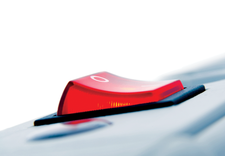Reality and myth in the quest for green computing
Got the Power

© Taffi, Fotolia
Klaus sorts out fact and fiction in the debate on saving power with some real-world tests.
As the computer magazines all too often report, computers are a big-time waste of energy, and a single Internet keyword search in a browser causes an unexpectedly high peak in power consumption for network components all over the planet, manifesting itself in the results page. Many experts, who are probably related to salesmen, will tell you the "industry standard solution" is to use an operating system that supports all the "advanced power management" features, which will make all electronic parts of your computer significantly more environmentally friendly. Once you start investigating this problem, however, you cannot help noticing that this optimistic assessment is (almost) totally wrong.
In addition, I am not even talking about the extra amount of energy going into producing extra controllers and circuits for improved power management. Perhaps you have heard that many photovoltaic cells require more energy in manufacturing them than they will ever get back from sunlight during their entire life cycle. This observation is not directly related to computers, but it begs the same point.
Most of the benefits in terms of power-saving effects that have been advertised for "intelligent" peripheral or mainboard features seem like a marketing gag once you actually measure the difference (see Table 1).
[...]
Buy this article as PDF
(incl. VAT)
Buy Linux Magazine
Subscribe to our Linux Newsletters
Find Linux and Open Source Jobs
Subscribe to our ADMIN Newsletters
Support Our Work
Linux Magazine content is made possible with support from readers like you. Please consider contributing when you’ve found an article to be beneficial.

News
-
Parrot OS Switches to KDE Plasma Desktop
Yet another distro is making the move to the KDE Plasma desktop.
-
TUXEDO Announces Gemini 17
TUXEDO Computers has released the fourth generation of its Gemini laptop with plenty of updates.
-
Two New Distros Adopt Enlightenment
MX Moksha and AV Linux 25 join ranks with Bodhi Linux and embrace the Enlightenment desktop.
-
Solus Linux 4.8 Removes Python 2
Solus Linux 4.8 has been released with the latest Linux kernel, updated desktops, and a key removal.
-
Zorin OS 18 Hits over a Million Downloads
If you doubt Linux isn't gaining popularity, you only have to look at Zorin OS's download numbers.
-
TUXEDO Computers Scraps Snapdragon X1E-Based Laptop
Due to issues with a Snapdragon CPU, TUXEDO Computers has cancelled its plans to release a laptop based on this elite hardware.
-
Debian Unleashes Debian Libre Live
Debian Libre Live keeps your machine free of proprietary software.
-
Valve Announces Pending Release of Steam Machine
Shout it to the heavens: Steam Machine, powered by Linux, is set to arrive in 2026.
-
Happy Birthday, ADMIN Magazine!
ADMIN is celebrating its 15th anniversary with issue #90.
-
Another Linux Malware Discovered
Russian hackers use Hyper-V to hide malware within Linux virtual machines.

